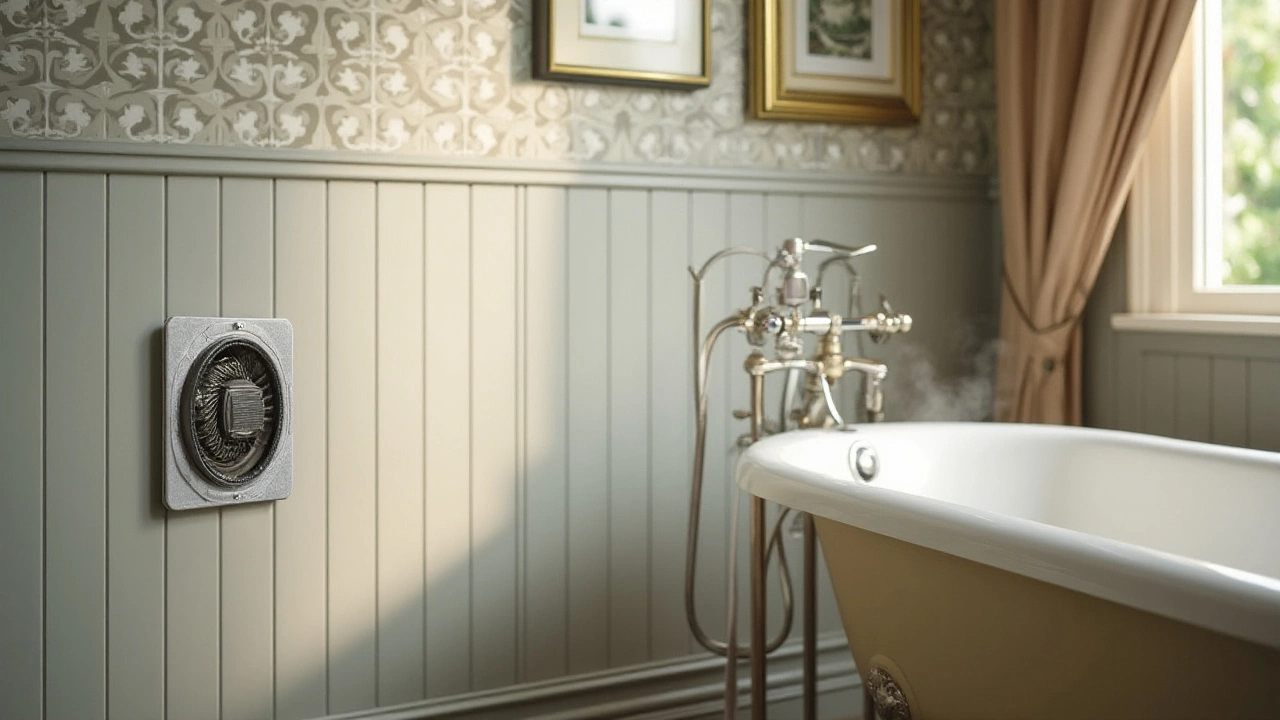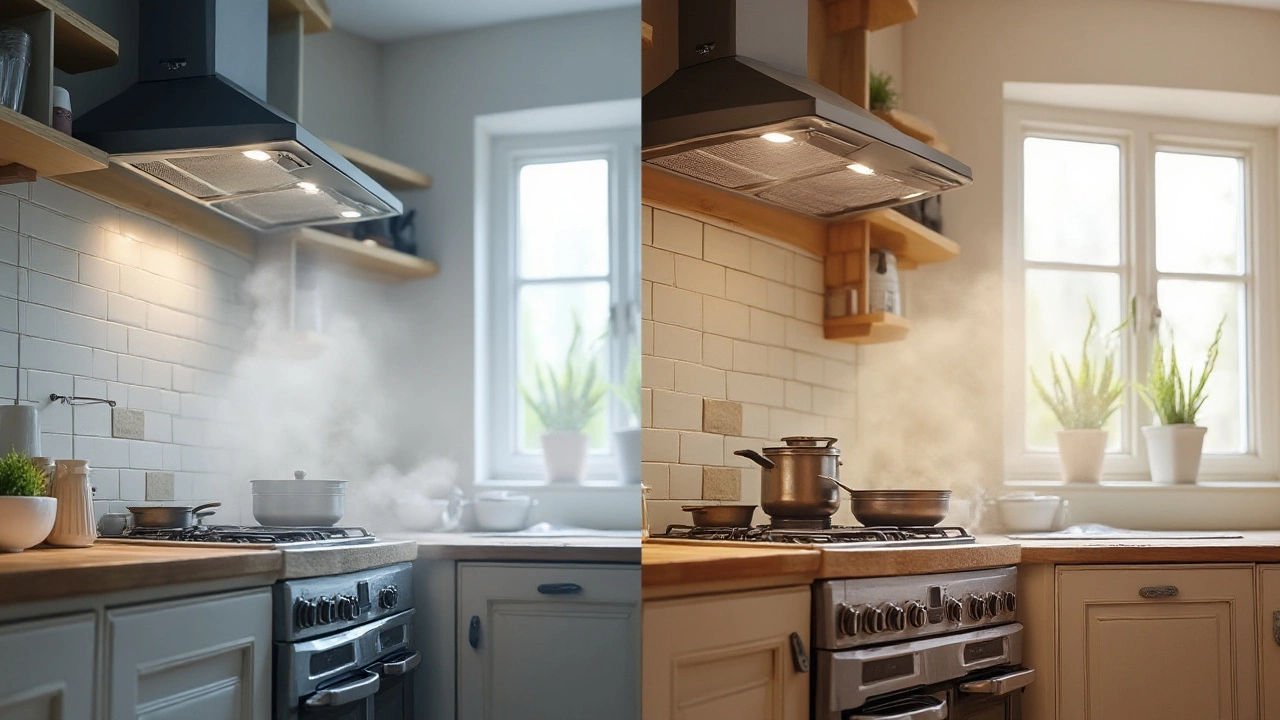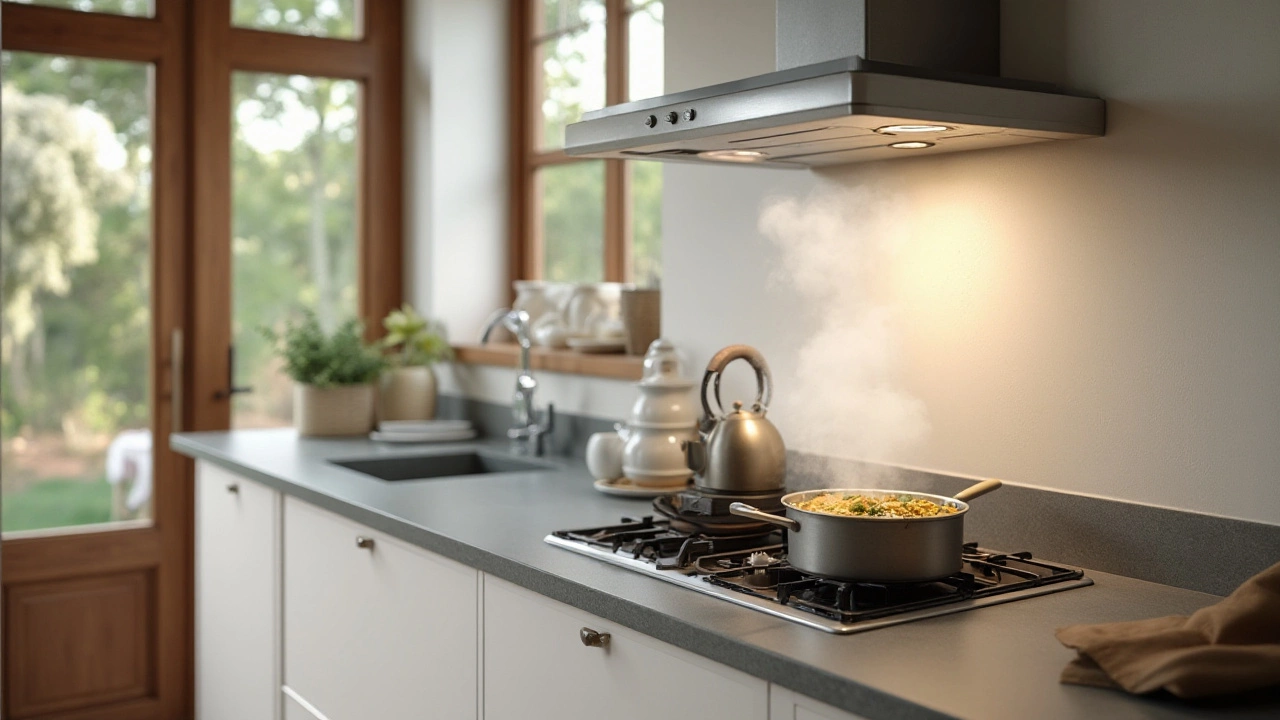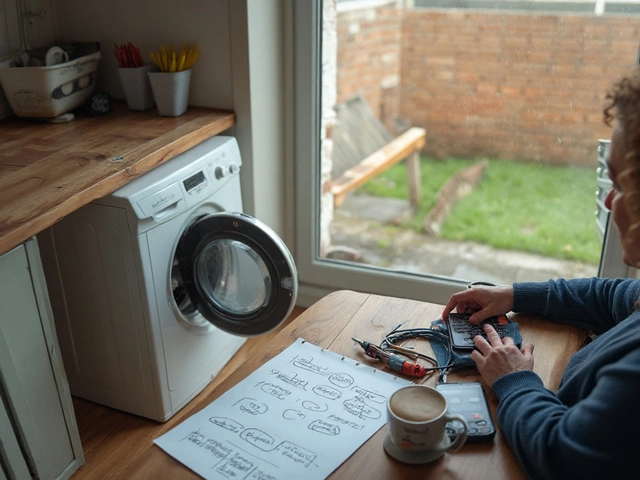Extractor fans have become a staple in home design, seamlessly integrated into kitchens and bathrooms to manage humidity and odors. Yet, as we step into a new year, it prompts the question: are these fans truly necessary?
For many, the practical benefits of removing moisture and improving air quality are undeniable, but the need for such appliances can vary depending on the household and environment. While some homes might benefit greatly from the installation of an extractor fan, others may find alternative solutions just as effective.
This article sets out to explore whether an extractor fan is a must-have feature or an optional enhancement, shedding light on its functions while considering both the benefits and potential downsides.
- Understanding the Role of Extractor Fans
- Benefits of Having an Extractor Fan
- Drawbacks and Considerations Without an Extractor
- Alternative Ventilation Solutions
- Expert Tips and Final Thoughts
Understanding the Role of Extractor Fans
The heart of an extractor fan's function lies in its ability to improve the air quality within enclosed spaces. Primarily, these fans are tasked with reducing humidity levels, eliminating odors, and in some cases, filtering out airborne particles. They’re most commonly found in kitchens and bathrooms where moisture levels can quickly shoot up, potentially leading to issues like mold and mildew if not adequately managed. By actively drawing moisture-laden air out and sometimes bringing fresh air in, extractor fans help create a more comfortable and healthier environment.
In kitchens, extractor fans are crucial in dealing with smoke, steam, and cooking smells that can linger long after the meal is complete. The strategic placement above stovetops ensures that vapors are vented out efficiently. This not only prevents the buildup of grease on kitchen surfaces but also helps in keeping unpleasant odors at bay. It's fascinating to note that modern kitchen fans can often come with built-in grease filters, capturing particles before they're expelled. A report by the Home Ventilation Institute points out that a well-maintained kitchen exhaust system can last up to 15 years, illustrating the importance of regular maintenance and checks.
Speaking of bathrooms, fans in these spaces are pivotal in extracting warm, humid air post-bath or shower. Without the presence of an efficient ventilation system, excess moisture can lead to peeling paint, warped wood, and significant discomfort. Given that many bathrooms have limited space and no windows, an extractor fan becomes the silent guardian against these issues. Despite their silent operation, these small machines work diligently to ensure the structural integrity of your home isn’t compromised over time. An interesting quote from Jeffrey Sinclair, a renowned HVAC specialist, states:
"Extractor fans are unsung heroes in managing indoor air quality, preventing what could be extensive and costly home repairs."
Benefits of Having an Extractor Fan
When it comes to managing indoor air quality, having an extractor fan is often considered a cornerstone of home ventilation systems. These fans primarily work to remove excess moisture from indoor environments, especially in zones susceptible to high humidity like bathrooms and kitchens. This is not just about convenience; their presence can lead to a tangible improvement in living conditions, contributing to a healthier home environment. Moisture-related issues, if unchecked, can promote the growth of mold and mildew, which are notorious for causing respiratory problems, particularly for those with allergies or asthma. By effectively reducing humidity levels, extractor fans mitigate these health risks, making them a valuable addition to any household. Without a fan, the steam from showers or cooking can seep into walls and ceilings, gradually deteriorating the building materials.
Beyond the health implications, an extractor fan can significantly enhance the comfort of a home. In areas like the kitchen, they play a pivotal role in dispelling smoke and lingering odors that can emanate from cooking. Whether it's the scent of burnt toast or the fumes from frying, no one enjoys a home that reeks of yesterday's meals. By promoting the swift removal of these odors, extractor fans maintain a fragrant freshness within the living space, which is particularly appreciated by guests. Additionally, it can extend the life of your kitchen furnishings by reducing the accumulation of grease and grime on surfaces, which are otherwise harder to clean and can lead to permanent staining.
Cost-Effective and Energy-Efficient
Over time, investing in an extractor fan can be cost-effective. By preemptively reducing moisture levels, families may save on larger repair costs associated with mold damage or structural decay, which can be significantly more expensive. Many modern extractor fans are designed to be energy-efficient, offering peace of mind to eco-conscious homeowners worried about carbon footprints or utility bills. An interesting development in recent years is the inclusion of sensors in some models. These sensors automatically detect changes in humidity or air purity, activating the fan when necessary, thus ensuring that energy is not wasted when ventilation is not needed. As the saying goes, 'a stitch in time saves nine,' and in this case, a small investment in ventilation can prevent major repair and health costs later on.
"Extractor fans are indispensable in controlling indoor air quality and preventing health-related issues," said Dr. Laura Stevenson, a renowned environmental health expert, highlighting their importance in modern home living.
While the upfront investment in an extractor fan might seem daunting, the long-term benefits of reduced property damage and improved air quality can offer substantial returns. When weighed against the cost of potential medical and repair bills due to poor ventilation, the advantages of having an extractor fan become even more apparent. This not only emphasizes their practicality but also underscores their value in improving everyday life quality, making them an asset that many households opt for in their home improvement plans.

Drawbacks and Considerations Without an Extractor
The notion of foregoing an extractor fan can initially seem liberating, freeing a home from unnecessary installations and additional energy consumption. Yet, it's paramount to consider the potential question marks that come with this decision, especially if you're someone who spends significant time in the kitchen crafting culinary delights. Extractor fans are crucial in curbing moisture, odors, and airborne grease, which, if left unaddressed, can cling unto surfaces, leading to longer cleaning routines and possibly damaging kitchen finishes over time. A space without proper ventilation might see the gradual accumulation of mold and mildew, particularly in areas with limited natural airflow.
Health considerations also play a key role here. In environments where the humidity is often high and persistent, like during lengthy cooking sessions, the absence of a fan may increase the odds of respiratory issues, exacerbating allergies and asthma for those sensitive. Potential dampness won't only harbor mold but becomes a silent foe to the structural integrity of your home, creating conditions where wood rot and other decay may take root unseen. The long-term effects might also show in unexpected hike in your maintenance costs, as the battle against these persisting issues without proper ventilation solutions can be challenging and financially draining.
It's essential to also think about odor accumulation. Without an extractor fan, smells from cooking may linger far longer than you'd like. While some meals leave a pleasant aroma, others can be less appeasing and overwhelming. This is more than just a nuisance; over time, odors can penetrate fabrics like curtains or sofa cushions, embedding themselves in your home. In a survey conducted by indoor air quality experts, over 63% of respondents mentioned having fresher air as a top priority, which further underscores the need for adequate ventilation.
Gerard Collins, a renowned HVAC consultant, advises "Air quality is a slow-invisible marker of our health—a choice between living fresh or growing stale over time."
Lastly, consider the potential consequences of humidity without the use of an extractor fan. Kitchens and bathrooms, being naturally damp spaces, face the challenge of maintaining a dry environment to avoid damage. Plaster may weaken, paint can start to peel, and woodwork might swell or warp without systems in place to manage moisture levels effectively. The financial aspect here is palpable, not merely as future repair costs but in terms of resale considerations; homes without effective ventilation might face scrutiny from potential buyers, many of whom nowadays value such features as staples of modern living. Ventilation solutions need to tread the line between necessity and discretion, finding a balance that serves both your living conditions and financial foresight.
Alternative Ventilation Solutions
In stepping away from the traditional extractor fan, it's important to explore other methods that effectively maintain the air quality in our homes. Many folk are looking at more eco-friendly or cost-effective options that not only suit their lifestyles but also align with their environmental values. Natural ventilation, for instance, has been a time-honored approach. Simply opening windows and doors to allow a fresh breeze can do wonders in dispersing moisture and odors. Although it might seem basic, strategically placed windows can create cross-ventilation paths that channel air flow effectively across spaces, eliminating trapped air and facilitating a cooler, fresher home environment.
Then there's the modern take with passive ventilation systems that leverage natural air currents. These systems are designed to harness changes in air temperature and pressure to move air through a building without mechanical assistance. The passive stack ventilation is a good example, where warm air naturally rises and escapes through vents near the ceiling, pulling in fresh cooler air from lower-level openings. These systems can be particularly beneficial in homes with open floor plans where air can circulate more freely without obstruction.
For those willing to invest in technology, heat recovery ventilation (HRV) systems offer another viable alternative. HRV units work by exchanging the heat from stale outgoing air with the incoming fresh air, thus maintaining a desirable indoor temperature while ensuring airflow. They are known to be energy-efficient since they reduce the need to reheat or recool indoor air during extreme weathers, providing not just fresh air but also some relief in energy costs. As noted by the Energy Saving Trust, "In the right conditions, an HRV system could reduce your heating bills by up to 25%." This substantial saving, paired with the benefits of maintaining a healthy air quality year-round, makes HRV systems an attractive option for many homeowners.
On the topic of affordability, vented skylights present yet another clever, albeit less conventional, solution. These installations are particularly effective in top-floor bathrooms and kitchens, where heat and humidity levels can be high. The venting feature functions like a window, allowing the hot air to rise and escape, while also bringing in natural light to create a more pleasant atmosphere. Not to mention, the architectural appeal they add to a space.
Beyond these methods, integrating plants within the home environment has proven benefits. Indoor plants act as natural air purifiers, absorbing toxins and releasing oxygen. Certain species like snake plants, spider plants, and peace lilies are particularly effective in transforming stale air into something more breathable. This biophilic design not only enhances the aesthetic appeal of the home but also supports overall wellbeing.
Considering your lifestyle and specific needs while taking the time to plan can help you effectively replace or supplement an extractor fan. Remember, when selecting an alternative, always consider the specific challenges or needs of the room you are ventilating, be it a kitchen bustling with cooking aromas or a steamy bathroom. As with all home upgrades, balance practicality with creativity to find a solution that enhances both your space and your lifestyle.

Expert Tips and Final Thoughts
Making the decision on whether to install an extractor fan requires weighing a mixture of practical considerations and personal preferences. Experts in home renovation and environmental well-being often suggest evaluating your home's specific needs. For instance, if you live in an older house without an open-concept design, installing a fan can drastically improve ventilation by reducing excess moisture, which could otherwise lead to mold and mildew. These elements contribute not just to structural issues but may impact health adversely, making the presence of a fan particularly beneficial in such scenarios.
Alternatively, modern homes with open layouts might be sufficiently ventilated through natural airflow, thus negating the absolute need for an extractor fan. In cases where fan installation is not a feasible option, experts suggest alternative methods. Passive vents, strategically placed mirrors, and the inclusion of houseplants like peace lilies can help enhance air quality by reducing pollutants naturally.
If sustainability is a priority, consider advancements in fan technology. Energy-efficient models are now available that consume less power but achieve remarkable airflow, and their quiet operation suits the peaceful ambience desired in many homes. One study highlights that homes equipped with modern extractor fans can reduce energy consumption related to alternative heating methods by up to 15%, offering an eco-friendly advantage worth mentioning. A noted architect, Tom Johnson, once remarked,
“Incorporating the right ventilation solutions is not just about maintaining aesthetics; it’s the invisible art of ensuring healthy living.”
While the benefits of an extractor fan are considerable, remember that maintenance and correct installation are critical to its operation. Routine cleaning ensures the fan doesn't lose efficiency over time. Annual checks by a reputable technician can prevent unexpected malfunctions and extend the appliance's life. For those focused on budget-friendliness, recent advancements allow for self-install kits that can be completed with basic DIY skills, saving on professional services.
The choice to install an extractor fan, or any alternative ventilation system, should integrate a blend of individual health needs, home architecture, and ecological awareness. By aligning these aspects, homeowners can enjoy improved air quality and healthier living spaces. As New Year's resolutions often aim towards improvement, adopting smart ventilation solutions showcases a commitment to not only the house's wellbeing but that of its residents too, including those furry companions running around, like my dog Max, who also breathe the same air.





